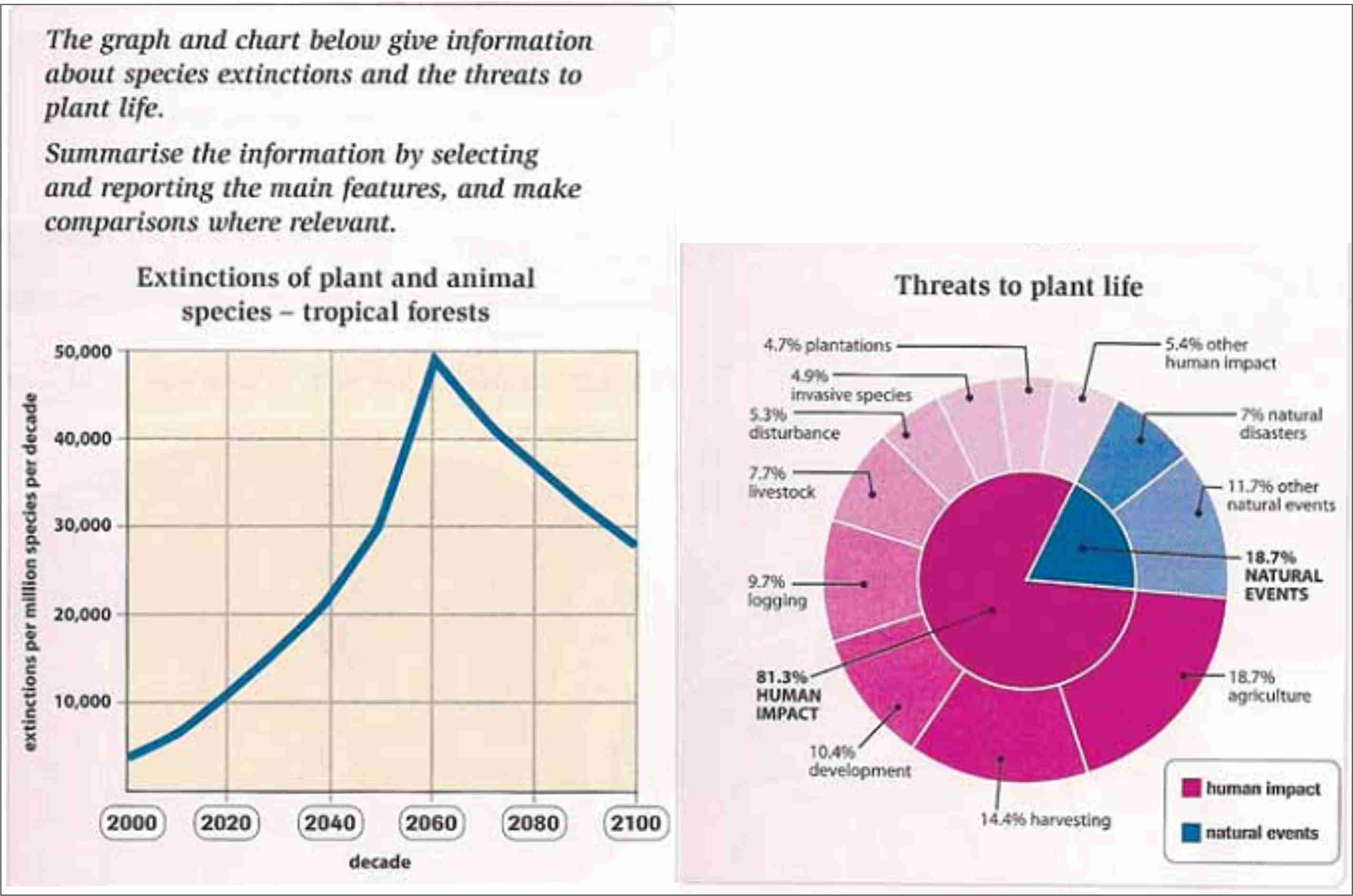The line graph provides a breakdown of the flora and fauna extinctions data in tropical forest from 2000 to 2015 and its forecast until 2100, while the diagram highlights the threats to flora life rest on human impact and natural event.
Clearly, it can be seen that the number of extinct species significantly increased in the beginning of period and it is predicted to reach the highest number in 2060, while in the next last decades, it is forecasted to dip dramatically. However, the biggest contributor in the plant life extinction is human impact, whereas natural events have less impact.
With regard to flora and fauna extinctions, they are estimated to increase over six decades. In the beginning of period, the number of flora and fauna extinction stood at approximately 5000 million species. This number is forecasted to reach a peak at 50,000 million species in 2060, but it will fall dramatically to under 30,000 million species in the last four decades.
Moving to the flora life's diagram, agriculture is the highest proportion in human impact category at 18.7 per cent, whereas plantations and invasive species are solely at under 5 percent. Harvesting is the second highest proportion at about less than a fifth, it is around double less than livestock categories at 7.7 percent. Logging and development categories are similar which have percentage at approximately one in ten. In another case of natural events' factor, natural disaster has a very small number, whereas other natural events proportions are 11.7 percent.
(247 words)
Clearly, it can be seen that the number of extinct species significantly increased in the beginning of period and it is predicted to reach the highest number in 2060, while in the next last decades, it is forecasted to dip dramatically. However, the biggest contributor in the plant life extinction is human impact, whereas natural events have less impact.
With regard to flora and fauna extinctions, they are estimated to increase over six decades. In the beginning of period, the number of flora and fauna extinction stood at approximately 5000 million species. This number is forecasted to reach a peak at 50,000 million species in 2060, but it will fall dramatically to under 30,000 million species in the last four decades.
Moving to the flora life's diagram, agriculture is the highest proportion in human impact category at 18.7 per cent, whereas plantations and invasive species are solely at under 5 percent. Harvesting is the second highest proportion at about less than a fifth, it is around double less than livestock categories at 7.7 percent. Logging and development categories are similar which have percentage at approximately one in ten. In another case of natural events' factor, natural disaster has a very small number, whereas other natural events proportions are 11.7 percent.
(247 words)

Writing_task_1.jpg
